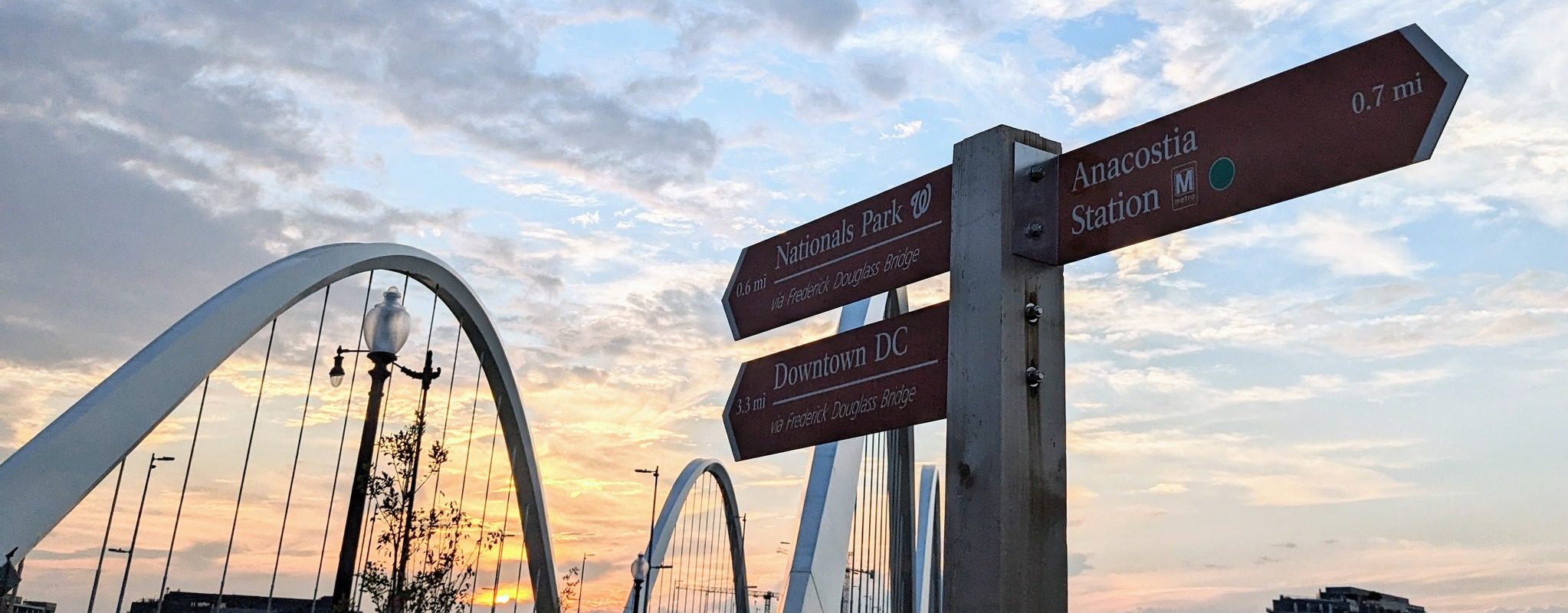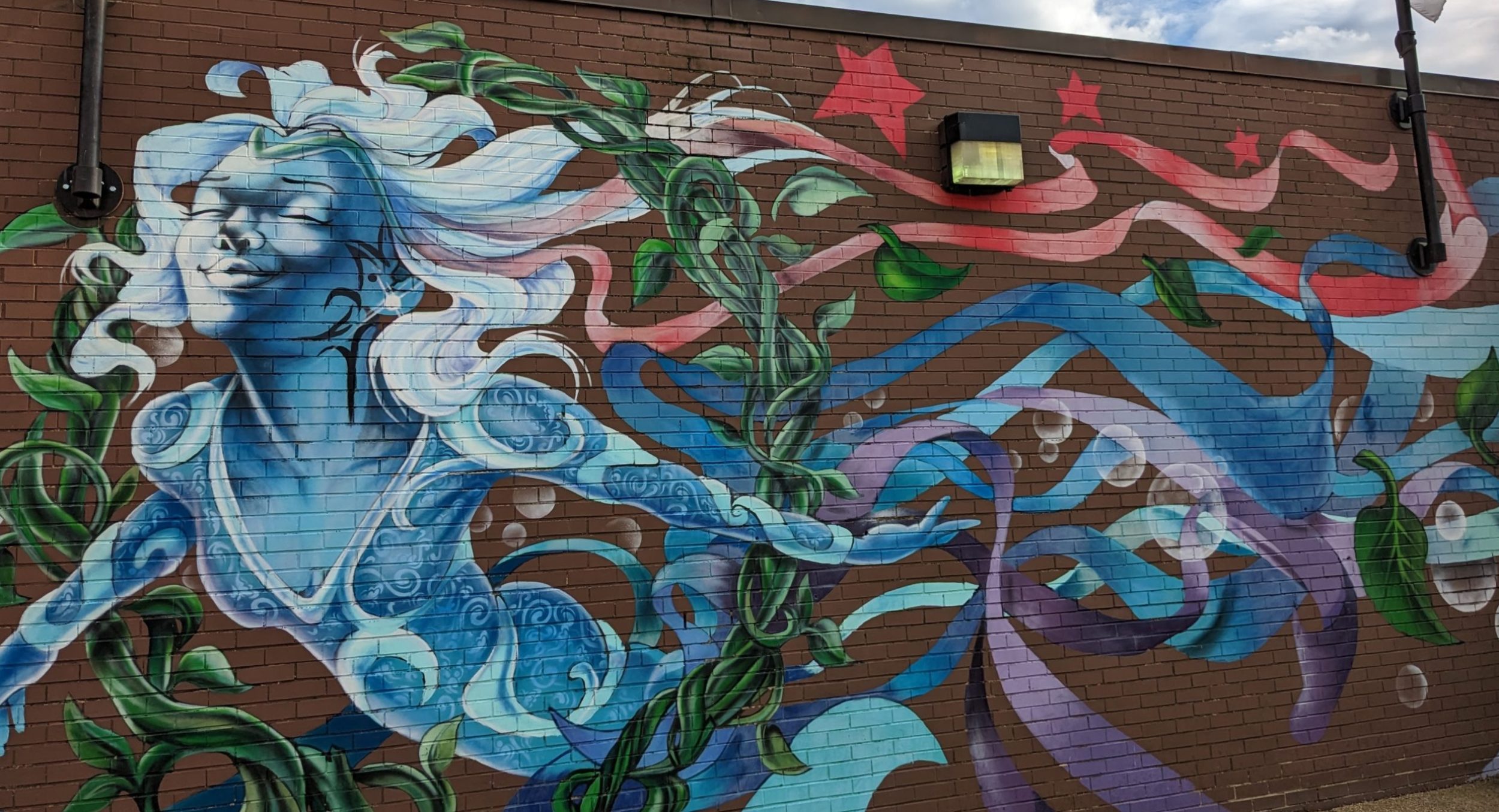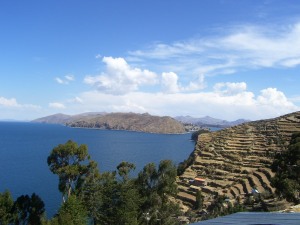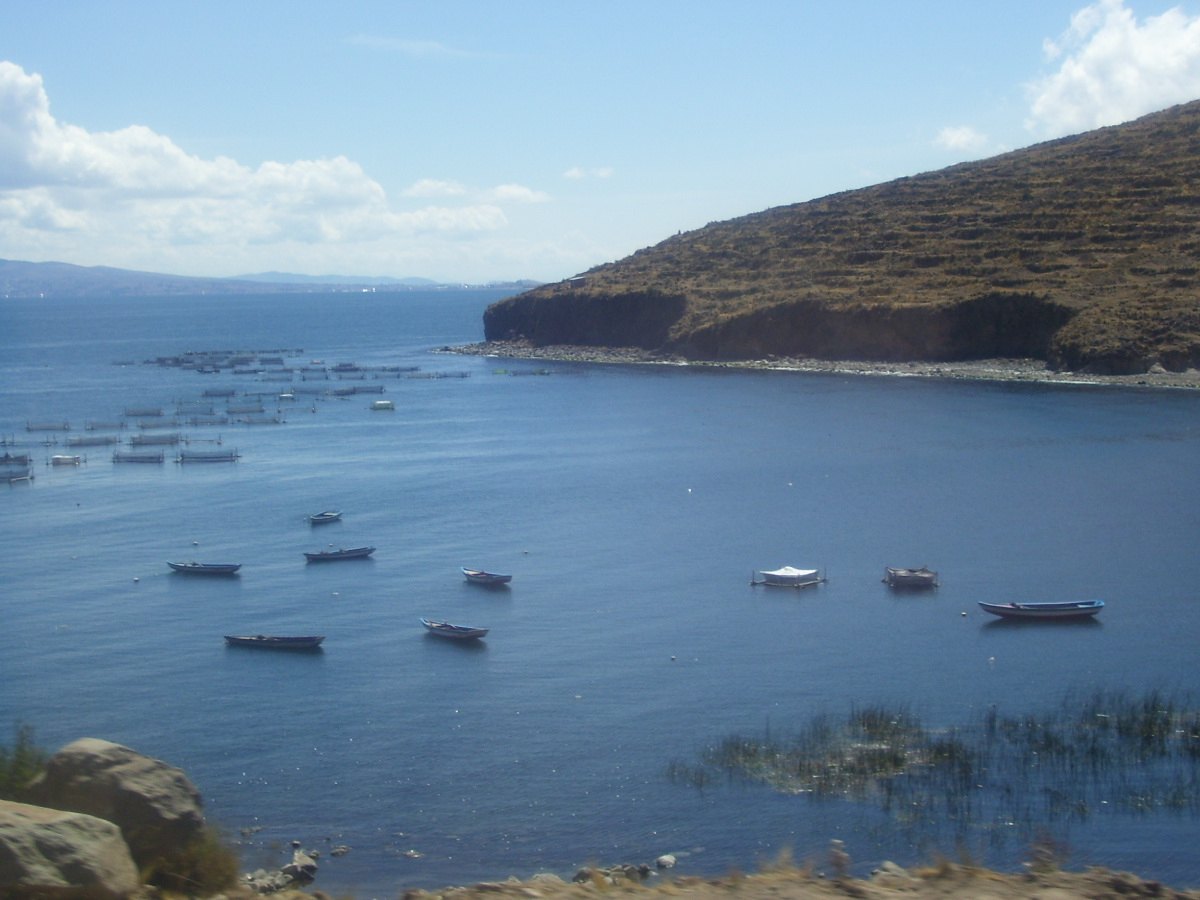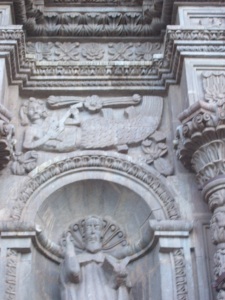 Guitar-playing mermaids smile out from the front of the cathedral at Puno, the Peruvian gateway city to Lake Titicaca. They’re a nice little shock for many visitors. How often do you see flirting encouraged in a Catholic church?
Guitar-playing mermaids smile out from the front of the cathedral at Puno, the Peruvian gateway city to Lake Titicaca. They’re a nice little shock for many visitors. How often do you see flirting encouraged in a Catholic church?
Catholic art tends show desire in two ways; a virgin mystic like St. Theresa writhing in untouched ecstasy, or the bedraggled Mary Magdalene atoning for her past.
The people around Lake Titicaca wanted more from their religion. They held onto their playful sirens, who had long been part of Andean traditions , and blended them with the symbols that the Spaniards brought. This is just another variation on the gumbo, the bouillabaisse, the jambalaya that is Catholicism. Add Jewish teachings to a stock of Roman Empire trappings, and then season to taste as the religion moves around the world.
Try to spot how the mermaids mix in with the more traditional images on the facade of the Puno cathedral, shown to the right. They float above the carved statues in the niches on either side of the door.
The Puno cathedral dates to 1757, more than two centuries after the Spanish brought Catholicism to the area around Lake Titicaca. The mermaid carvings were not some slip that the local priest allowed begrudgingly in the earliest days of conquest and conversion. The mermaids hold their own with saints on the Puno cathedral, as they do in other churches in western Bolivia.
Crowned Leader
 The old traditions of the people of Lake Titicaca got a boost with the election of Evo Morales, who claims to be the first Bolivian president of purely indigenous ancestry. Morales went to Tiwanaku, Bolivia’s most important archaelogical site, on Jan. 21, 2006. That’s one of the statues of Tiwanaku, shown to the left in
The old traditions of the people of Lake Titicaca got a boost with the election of Evo Morales, who claims to be the first Bolivian president of purely indigenous ancestry. Morales went to Tiwanaku, Bolivia’s most important archaelogical site, on Jan. 21, 2006. That’s one of the statues of Tiwanaku, shown to the left in 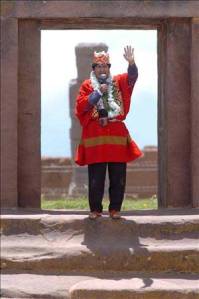 one of the pictures from my 2008 trip. At Tiwanaku, Morales was named supreme leader, or Apu Mallku, of the Aymara people. There’s a picture from the Internet of his Aymara ceremony to the right. The day after that ceremony, Morales went to official ceremonies in the capital city of La Paz.
one of the pictures from my 2008 trip. At Tiwanaku, Morales was named supreme leader, or Apu Mallku, of the Aymara people. There’s a picture from the Internet of his Aymara ceremony to the right. The day after that ceremony, Morales went to official ceremonies in the capital city of La Paz.
Tiwanaku first, La Paz second. Morales early on showed where his priorities were. And, La Paz is very much a city of western Bolivia, of the people of the Andes. Morales has so far scared many of the people who had long run Bolivia, the folks more proud of Spanish ancestry, living in the pink region on the map shown to the left. The map comes from an Economist article that touched on the plans for a Jan. 25 vote on a new Bolivia constitution:
“(V)iolence erupted after Mr Morales decree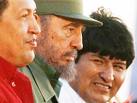 d on August 28th that a referendum would be held on a new constitution…The changes are opposed by most lowlanders; Mr Morales refers to them as privileged “oligarchs” intent on his overthrow and on denying indigenous Bolivians their rightful share of the country’s natural gas, minerals and land. They, in turn, suspect the president of trying to turn the country into a satellite of Venezuela and Cuba.”
d on August 28th that a referendum would be held on a new constitution…The changes are opposed by most lowlanders; Mr Morales refers to them as privileged “oligarchs” intent on his overthrow and on denying indigenous Bolivians their rightful share of the country’s natural gas, minerals and land. They, in turn, suspect the president of trying to turn the country into a satellite of Venezuela and Cuba.”
You can see how Evo’s photo-ops, like the picture I found of him on the Web with Fidel Castro and Venezuela’s Hugo Chavez, might help stoke fears — at least among those with much to lose. For the people of the highlands, though, Evo is a hero. In my short time in western Bolivia, I saw lots of propaganda painted by people allied with his party, but there also were many signs that looked homemade.


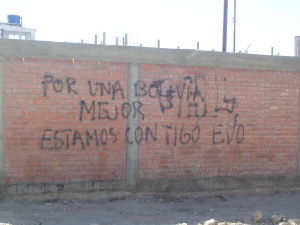
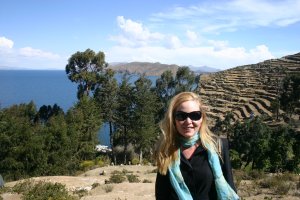

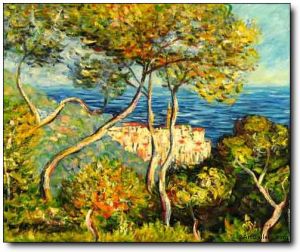 While I’m anxious to see the eastern side of Bolivia, I’d have to try to steal at least a full day at Isla del Sol in the west on Lake Titicaca. Its beauty awed me on a short trip, reminding me quite a bit of the two Monet paintings of the Mediterranean I have mixed in here with my photos.
While I’m anxious to see the eastern side of Bolivia, I’d have to try to steal at least a full day at Isla del Sol in the west on Lake Titicaca. Its beauty awed me on a short trip, reminding me quite a bit of the two Monet paintings of the Mediterranean I have mixed in here with my photos.